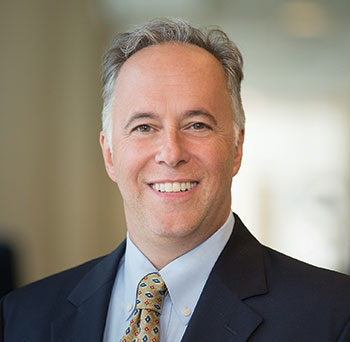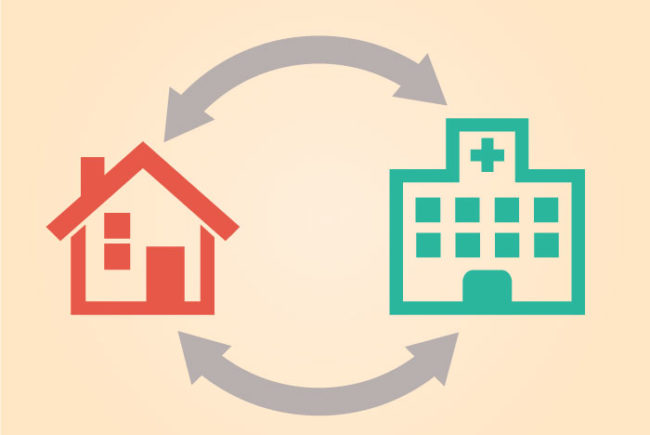
Mike Schiller, senior director of supply chain for the Association or Healthcare Resource & Materials Management
If hospitals are going to cut costs while improving quality and outcomes, supply chain professionals must be fully engaged. Mike Schiller, senior director of supply chain for the Association for Healthcare Resource & Materials Management, discusses how AHRMM can help.
What are some of AHRMM’s key areas of emphasis to help members improve the health care supply chain?
There are a number of key areas in which AHRMM is engaging and advocating on behalf of the supply chain professional; however, we are focusing our time and energies on two primary areas — the Cost, Quality, and Outcomes (CQO) Movement, and UDI Adoption within the provider setting.
The CQO Movement has grown from a focus on educating the supply chain professional within the provider setting, to engaging executive leaders from across all segments of health care. The AHRMM CQO Summit for Healthcare Thought Leaders is our primary vehicle. Roundtable discussions and input create the foundation for our CQO task force, which is an outgrowth of the CQO Summit.
Last year, the task force delivered the 2015 AHRMM CQO Report: "Uncovering Applications of the CQO Movement Throughout Healthcare." The report is a compendium of case studies highlighting real-world examples and benefits of CQO. This year’s task force is focused on the supply chain’s alignment with the Triple Aim. More information on the AHRMM CQO Report can be found at www.ahrmm.org/CQOReport.
AHRMM’s CQO Leading Practices Repository is another resource for the supply chain field. The repository contains case studies highlighting the successful reduction of health care-associated infections and the reduction of costs associated with blood products. AHRMM has released another call for leading practices this year to add to the growing repository.
AHRMM will be engaging health care leaders, including those from the provider, clinical, supplier, association, regulatory and standards organizations communities, in the development of a Learning UDI Community Steering Committee (LUCSC). The committee will serve to identify unique device identification (UDI) adoption barriers with the goal of engaging the health care community in discovering and documenting real-world adoption solutions.
The overarching goal of these initiatives is to accelerate learning, increase efficiencies and improve patient outcomes.
The Schiller File |
|
CV • Senior director of supply chain for the Association for Healthcare Resource & Materials Management (AHRMM), a personal membership group of the American Hospital Association, for which he collaborates with industry leaders on various
health care and supply chain advocacy initiatives.
ACCOMPLISHMENTS • As a corporate director of supply chain, he was responsible for coordinating all aspects of medical equipment procurement for the building of the Ann & Robert H. Lurie Children’s Hospital of Chicago. EDUCATION • Graduate certificate in information systems management from the Keller Graduate School of Management, Chicago. • Bachelor’s degree in business management from Northeastern Illinois University, Chicago. |
With so much emphasis in the payment system centered on cost, quality and outcomes, how is AHRMM addressing these issues with its members?
Value-based payments (think Comprehensive Care for Joint Replacement or CJR), value-based purchasing, evidence-based outcomes and data standards are just a sampling of the various initiatives underway today. AHRMM, in collaboration with our sponsors, education and marketing teams, an extensive community of committee volunteers and health care subject matter experts, is developing content that informs and educates today’s health care supply chain professional. We are working toward offering this content across multiple modalities to mirror the wide range of learning styles represented within our membership.
Are supply chain directors today having to develop a deeper understanding of how various clinical products impact outcomes than in the past?
Absolutely. Not only a deeper understanding of outcomes that are associated with products, but a knowledge of, and access to, evidence-based outcomes data. As the health care field continues to move to value from volume, traditional product standards committees have evolved into today’s value-analysis committee. This highly collaborative group includes supply chain professionals, clinicians and physicians who not only review product costs, but also focus on patient quality and outcomes, which is one of the foundational principles of CQO.
How is the field embracing and implementing unique device identification standards today?
Initially, we saw a number of larger organizations taking the lead with UDI capture and exchange programs, thereby paving the way for others. We are now seeing more hospitals start down the path of UDI adoption. AHRMM’s focus is to identify those organizations that are just getting out of the starting blocks. We believe that by capturing the programs in place at the large health systems, in addition to those programs at organizations that are just starting down the path, we will have a repository of programs, road maps, and project plans that will resonate with a larger audience.
What challenges remain in UDI implementation and what tools are available to help hospitals in this area?
Interestingly, as we move down this path of UDI adoption, there are hurdles that were unforeseen back in 2013, when the UDI ruling first went into effect. However, with the passing of compliance dates for Class III devices (September 2014), and life-sustaining, life-supporting and remaining implants (September 2015), we are beginning to come across what we are calling adoption barriers. This is the key role that the LUCSC will play. By identifying these adoption barriers and their solutions, the LUCSC will post and share these progressive practices, as well as any tools, through the UDI Adoption and Implementation Repository. Capturing, storing, maintaining and providing access to this shared knowledge base will increase the likelihood of success in accelerating and streamlining the UDI adoption learning curve.
How is the supply chain director role changing and what skill sets are paramount to achieving success?
The supply chain is in the midst of a renaissance, driven by the realization that to remain competitive, organizations need a supply chain leader with unique qualifications that were not needed 15 or 20 years ago. System integration, consolidation, geographic expansion, regulations, increased cost pressures, technology, innovation and care delivery model changes are just some of the things affecting health care today. Modern supply chain leaders and their teams have responded to all of these challenges while simultaneously becoming more strategic and recognized by other health care professionals. Advanced education, analytics, the ability to bridge and build strategic relationships and an expanded big-picture perspective are just a few of the qualifications needed. To operate at the executive level, you must be able to move beyond being a good communicator, to understanding and communicating in the language that executives and board members speak.
Are supply chain directors becoming more influential within hospital and health care leadership teams as the field continues moving to value-based care?
We are definitely seeing this today as more health care organizations elevate the role of their supply chain leaders to the executive level. Because the role of the supply chain professional touches nearly every aspect of the health care field, internally as well as externally, supply chain professionals have the unique opportunity and excellent advantage of gaining experience through the normal course of their jobs, which makes them ideal candidates for top leadership roles in health care organizations.





